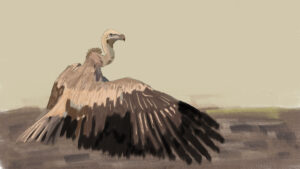Kuoo Kuoo Kuoo, the very distinct and loud song reminds the human body the subtle love and yearning. Koels’ loud yet melodious songs marks the utmost beauty of nature in the hearts of the humans.
The bird is widely popular in the Indian context through stories, sayings and even has bollywood songs about his melodious voice, “Koel si teri boli, ku ku ku ku… ku ku ku ku..”
Though the name and the sound is common, the sighting of the bird is a little difficult. Koel in nature is an excellent player of the hide and seek. Though in appearance the bird is as distinct as its calls, the males are full glossy black with a dense bloody red eyes. Females on the other hand are blackish brown with white dots and streaks running through the body which makes them camouflage with the dense tree and branches. Their songs and calls could be heard from the distance but to find this secretive bird, one would have to follow the voice through many Kuoos and look very sharp and closely somewhere in between the dense tree. Hopefully at each Kuoo you will come closer to the bird unless he/she flies away.
The skill of the koel to hide in the environment gives her the ability to lay the eggs in others nest without them ever knowing.
Recalling what Viru Sahastrabuddhe said in his opening remarks, “Koel apna ghosla kabhi nahi banati, wo apne ande dusro ke ghoslo mai rkhti hai.” Which translates to, Koel does not builds its own nest, she lays her eggs in the nest of others, though the continuation of this dialogue goes towards the young koel pushing other eggs out of the nest, which happens, but is not always the case.
The male koel usually scouts the nest and calls for the female, the couple observe the nest for the host birds behavioral pattern and timings. The male koel then distracts the host parents making them leave the nest and as the nest is left unsupervised the female koel lays its own eggs along with the host birds’ eggs. This smart bird in some cases even gives the eggs that looks very similar to the hosts’ birds egg. This young koel when hatched even imitates the hosts fooling them to feed this young koel as their own.
Remembering the sound of the kuoo during my childhood in the capital, my first sighting of the bird was in Rajasthan, specifically Western Rajasthan in Jaisalmer and in Bikaner. At first, I assumed that these are common throughout India but upon a little reading I found that Koel are actually not a bird of ther desert and its is hardly ever mentioned in a desert context, Koel is a habitant of a more tropical and subtropical region with dense vegetation.
It is said that Koels’ calls hints the coming of the monsoon and with this year, Western Rajasthan experiencing the rapid growth in the rainy days, The koels which I saw maybe came to inform us about this climate change.


